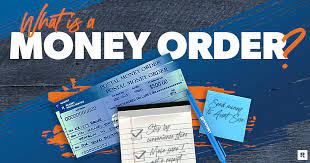A money order is an official document issued by post offices, banks, government bodies and retailers for payment of a specific amount. They’ve been around for years as a reliable payment option that many trust over cash or checks for payments. Unlike personal checks or debit card purchases, money orders cannot bounce and usually guarantee the availability of funds.
What Is the Price of a Money Order?
Money orders typically cost $1-$10 and can be acquired from various outlets such as the United States Postal Service, grocery stores, check-cashing businesses, some credit unions and banks. In some cases they may even be purchased online through certain issuers for an additional small fee.
How Do I Fill Out a Money Order?
When filling out a money order, you’ll be required to provide the recipient’s name and address, the amount of the order, as well as other relevant information. Furthermore, you must sign it to confirm your accuracy. In some cases, money orders can also be purchased with your credit card at some issuers; however, please be aware that additional fees may apply.
What Are the Advantages of Utilizing Money Orders?
When purchasing large items such as electronics or cars from someone you don’t know (like your neighbor Joe), using a money order is the safest way to pay. It protects both your bank account and debit card information, giving you peace of mind that they won’t steal or misuse it in any way.
If you’re selling something and need to send it overseas, a money order can make the sale go more smoothly as your cousin will know that you actually have the funds. Furthermore, sending something internationally won’t likely get returned since each money order comes with its own serial number that can be tracked online.
How Can I Determine Where a Money Order Was Cashed?
You can track where a money order was cashed by keeping its receipt and checking your bank statement. Many issuers offer tracking tools online or even have mobile apps; however, the process may differ slightly depending on which issuer issued it.
What Can Be Done to Fill Out a Money Order?
A money order can be filled out and printed by an outside party. All that needs to be done is provide the payee’s name and address, then prepay both the face value of the order plus any applicable fees before printing. Finally, send it on to the intended recipient who should then take it directly to their bank or another place that cashes money orders in exchange for cash.
What Are the Disadvantages of Using Money Orders?
Money orders can be convenient, but they’re not always the best solution for everyone. They may be costly and not as secure as one might expect; additionally, tracing them if lost can prove challenging.

